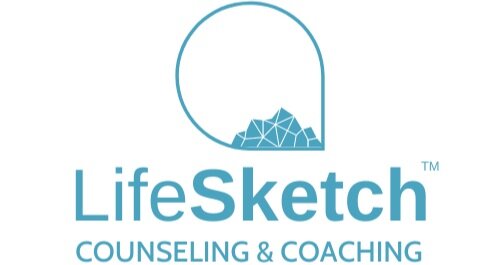How to Choose a Career with ADHD: A Step-by-Step Guide
Have you ever felt like you're on a never-ending treasure hunt, searching for that one perfect career buried somewhere in the vast ocean of options? This 'treasure hunt mentality' can be especially daunting for those with ADHD, who often face added pressure to make the 'right' career choice. The fear of making a mistake can lead to anxiety and paralysis.
But what if I told you that there's no 'right' career waiting to be discovered? Instead, we cultivate our careers through a structured and strategic approach.
Over the years, I’ve seen that choosing a career can be a daunting task for anyone, but it can feel especially overwhelming for those with ADHD. The constant distractions, impulsivity, and challenges with executive function can make it difficult to narrow down your options and make informed decisions.
But here's the good news: with the right approach, you can design a career that not only fits your unique strengths but also aligns with your life goals and aspirations. In this guide, I’ll walk you through a step-by-step process to help you choose a career that works for you. Whether you’re just starting out or thinking about making a career change, this process will give you the clarity and confidence you need to move forward.
In this guide, I’ll walk you through a step-by-step process to help you choose a career that works for you. Whether you’re just starting out or thinking about making a career change, this process will give you the clarity and confidence you need to move forward.
Step 1: Start with You
The first step in choosing a career is to start with you. Instead of trying to fit yourself into a job, think about what you want and need in a career. Ask yourself:
What’s important to you?
What role do you want your career to play in your life?
What are your life goals?
Take some time to explore your life’s purpose and articulate what success means to you. By understanding your values, passions, and priorities, you can begin to shape a career that revolves around your life—not the other way around.
Step 2: Define the Work You Want to Do
Once you’ve identified what you want from your career, it’s time to define the work you want to do. This isn’t about picking a specific job title or field just yet; it’s about understanding the types of responsibilities, tasks, and skills you enjoy and excel at. Think of this as building your career capital—the unique combination of your skills, strengths, personal characteristics, and areas of passion and knowledge.
To get started:
Reflect on your past experiences. What tasks did you enjoy most? What were you naturally good at?
Utilize tools such as assessments and inventories to gain deeper insights into your strengths and preferences.
Sketch out your ideal job description. What would you love to be doing every day, and why?
By clearly defining the work that energizes you, you’ll be better equipped to find a career that allows you to thrive.
Step 3: Clarify Your Niche
Now that you have a clearer picture of the work you want to do, it’s time to find your niche—the sweet spot where your motivation, mastery, and market demand intersect. In other words, where you can do what you’re good at, what you enjoy, and what people are willing to pay you for.
To clarify your niche, consider the 5 Ps of your career path:
People: Who do you want to work with or help?
Problems: What problems do you want to solve?
Process: How do you want to work (e.g., independently, in a team, creatively)?
Place: Where do you want to work (e.g., remote, in an office, in a specific industry)?
Purpose: What impact do you want to make through your work?
With this information in hand, you can start to explore job titles, roles, and fields that align with your unique niche.
Step 4: Refine and Validate Your Career Possibilities
At this point, you should have a few potential career paths in mind. Now, it’s time to refine and validate these possibilities. Start by doing some research to assess the viability of each path. Consider factors like required education, necessary skills, job market trends, and earning potential.
One of the best ways to validate your options is through informational interviews. Talk to people who are already working in the roles or industries you’re interested in. Ask them about their experiences, challenges, and what they love about their jobs. This real-world insight will help you get a clearer picture of what each path could look like and whether it’s the right fit for you.
By the end of this step, aim to narrow your focus to 3-5 distinct career possibilities. This will make the decision-making process more manageable and less overwhelming.
Step 5: Get Ready for What’s Next
With a shortlist of career possibilities, it’s time to start preparing for the next step—whether that’s a job search, applying for a program, or even starting a business. To do this, you’ll need to clarify your professional identity and work on your personal brand. Think about:
What message do you want to convey to potential employers or clients?
What’s your unique value proposition?
How can you position yourself as the ideal candidate for the roles you’re interested in?
This is also the time to start setting the foundation for your career transition. Update your resume, polish your LinkedIn profile, and start building a network in your chosen field. The more prepared you are, the smoother your transition will be.
Step 6: Decide on Your Feet
Finally, it’s important to remember that choosing a career isn’t about making a one-time, lifelong decision. Instead, it’s about making informed choices as you go, adapting and learning along the way. So start to activate your career possibilities:
Begin your job search or apply for opportunities that excite you.
Continue learning and refining your skills.
Stay open to new possibilities and be willing to pivot if needed.
Choosing a career is a dynamic and developmental process—one that evolves as you grow and change. Every time you find yourself at a career crossroads, come back to this process:
What do you want?
What do you have now?
What are your options?
What does it take?
Get ready.
Take action and learn.
Conclusion
Choosing a career with ADHD might seem daunting, but by following this step-by-step process, you can create a path that aligns with your strengths, passions, and life goals. Remember, it’s not about fitting into a mold—it’s about designing a career that works for you.
FREE ADHD CAREER Guide!
Discover ‘What’s Next?’ and Move Forward in Your Job Search.
I’m offering a FREE Career Change Guide to help you dive even deeper into this process. It’s packed with practical tips, exercises, and tools to support you on your journey. Click the link below to get your copy, or drop a comment if you’d like me to send it straight to your inbox.
What’s Inside: The Tools and Step-by-Step Process for How to Figure Out Your Path and Get a Good Job. (You Really Can’t Miss This One…)



